Exploring Minecraft Multiplayer: Features and Community
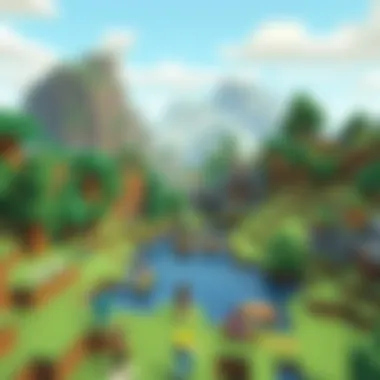
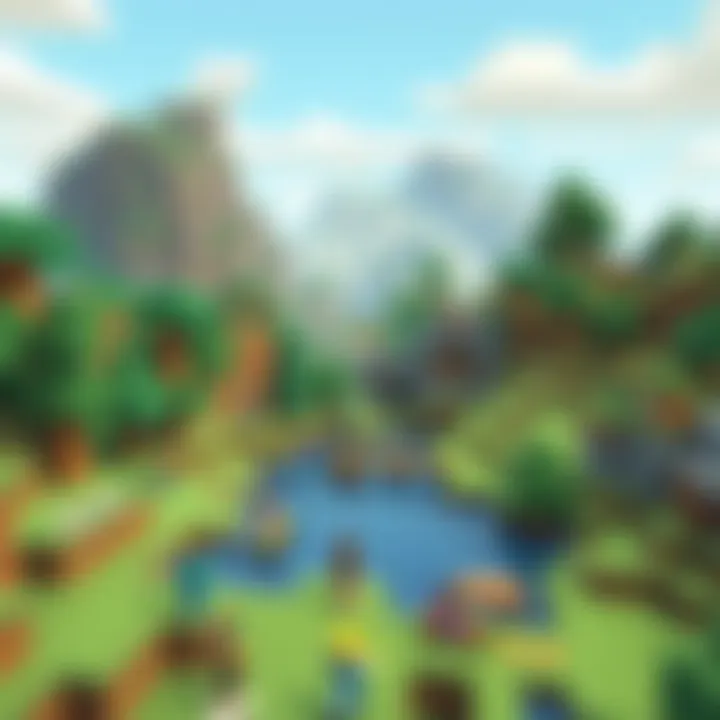
Intro
Minecraft has long been a staple in the gaming community, captivating players with its limitless creativity and exploration. Yet, it’s the multiplayer experience that often takes this game to new heights. In this section, we unpack the attractions of multiplayer gameplay, diving into why it’s become a major focal point for gamers. It’s more than just a game; it’s a shared journey where collaboration meets competition, where friendships blossom and rivalries ignite.
The beauty of Minecraft multiplayer lies in its sheer diversity of experiences. Whether you're teaming up to build a sprawling metropolis or engaging in fierce PvP (Player vs. Player) battles, the dynamics at play are rich and varied. This exploration isn’t just about playing together; it’s about understanding the intricate web of interactions that emerges from shared spaces. With evolving server landscapes, customized game modes, and community-driven innovation, the potential of Minecraft multiplayer is vast.
Our discussion will cover aspects such as popular multiplayer modes, the technical elements that enhance gameplay, and the social dynamics that shape interactions among players.
Additionally, we will examine specific strategies that can optimize both performance and engagement. Whether you're an experienced player or someone just stepping into the Minecraft realm, this exploration promises insights that can elevate your gameplay experience in significant ways.
Understanding Minecraft Multiplayer
Understanding the intricacies of Minecraft's multiplayer aspect is not just about diving into a game with friends; it's about comprehending the significant layers that can enhance or hinder the overall gaming experience. Multiplayer gaming in Minecraft represents an immersive world where connections, both technical and social, create unique narrative threads. The strength lies in knowing more than just how to join a server, but also grasping the nuances that accompany collaborative gameplay and community interaction.
The key benefits of exploring Minecraft's multiplayer environment are manifold. For starters, it opens the door to creativity and teamwork, allowing players to realize grander projects or ventures that would be impossible in a solitary mode. Think about the monumental structures created when groups of players put their heads and resources together — a vision can rapidly scale up when there's a collective effort at play.
However, there are considerations that cannot be overlooked. Different multiplayer modes come with their own specific rules of engagement, and understanding these can mean the difference between a harmonious experience or a chaotic, frustrating one. Additionally, diving into multiplayer means navigating social dynamics; getting along with fellow gamers can sometimes require more than just technical skill. It's essential to strike a balance between social interaction and gameplay objectives. Thus, comprehensively understanding these elements is vital for fully appreciating what Minecraft multiplayer has to offer.
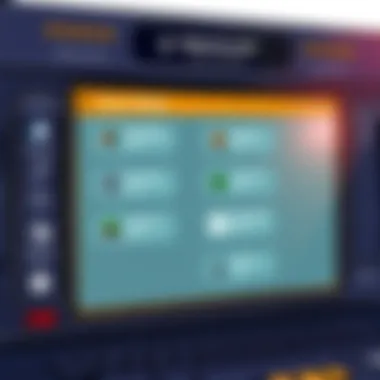
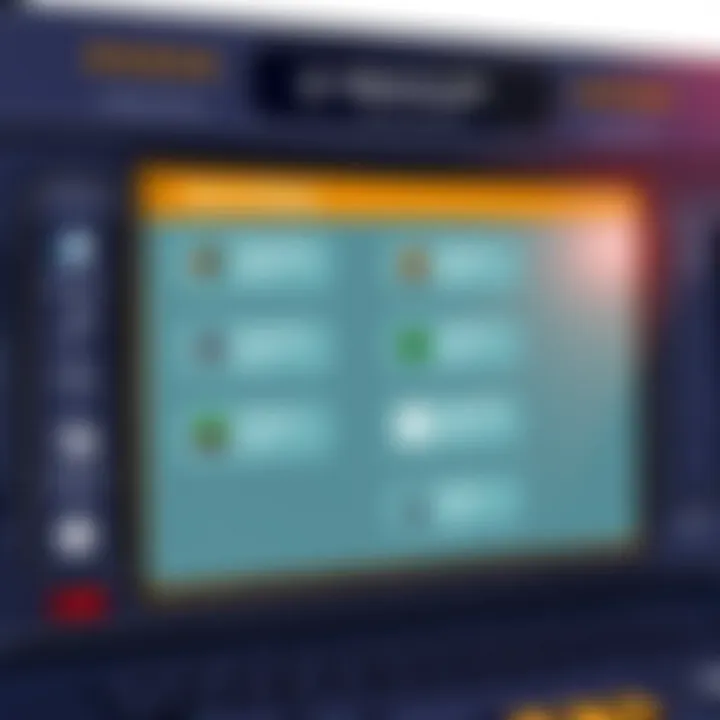
Conceptual Foundation
To build a solid foundation on multiplayer dynamics in Minecraft, one must consider what it means for gameplay. At its core, multiplayer transforms the basic paradigm of Minecraft from a solo adventure into a community-focused activity. This shift catalyzes new experiences: players can share resources, challenge one another in mini-games, or band together to fend off mobs, enhancing both the complexity and enjoyment of the game. Moreover, the introduction of various multiplayer modes — be it local, online, or through dedicated servers — fosters diverse interactions that can shape how players perceive and enjoy the game.
Multiplayer in Minecraft isn't merely about having several players operating in the same space; it involves a rich fabric of collaboration, competition, and socialization that altogether reshapes the player's experience. When considering community-led events, social challenges, or server-wide projects, the multiplayer facet formulates a nuanced layer that adds immense value to the game. Furthermore, the presence of mods and plugins in multiplayer can spur creativity and revel in unique gameplay events that would not be possible otherwise.
Historical Context
The evolution of Minecraft's multiplayer capabilities has seen significant milestones that shaped today's community. When the game was first released in 2011, the multiplayer aspect was simplistic, limited to local connections and basic online features. Over the years, advancements in technology coupled with community feedback have spurred vast improvements. For example, the introduction of dedicated servers has revolutionized multiplayer gaming, giving rise to robust communities focused on specific gameplay experiences, crafting, and modding.
Fan forums, such as those found on Reddit and other social platforms, played a pivotal role in structuring the multiplayer scene. Players began sharing tips on hosting servers, creating mods, and building communities that could rival traditional gaming clans. This organic growth led to the establishment of Minecraft Realms, a subscription service that offered a more controlled multiplayer experience.
These changes did not come without their challenges. Issues of server stability, bandwidth limitations, and the complexity of managing large player bases have always been a consideration for those engaging with multiplayer options. Yet, the once-humble beginnings of mining blocks have transformed into immersive multiplayer worlds where the focus is on collaboration, community-driven content, and diverse playing styles. Keeping an eye on this history not only informs current players but also prepares newcomers to fully appreciate and engage with the rich multiplayer dynamics available in Minecraft.
Types of Multiplayer Modes
Understanding the various multiplayer modes in Minecraft is essential for players looking to maximize their enjoyment and engagement with the game. Each mode offers unique benefits and experiences, catering to different play styles and preferences. Choices range from cozy couch sessions to dynamic online interactions, allowing for a flexible gaming experience. These multiplayer modes aren't merely superficial options; they form the backbone of the multiplayer experience, impacting not just gameplay mechanics, but also social interactions and long-term player retention. Let's explore these diverse modes more thoroughly.
Local Multiplayer
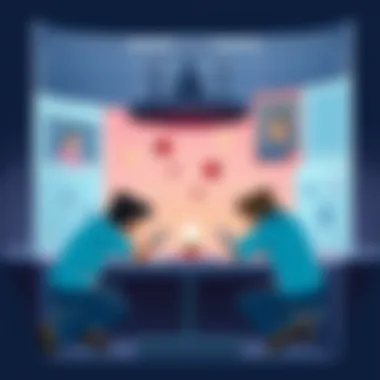

Local multiplayer, often referred to as couch co-op, offers the most intimate Minecraft experience. By gathering friends or family in the same physical space, players can share the thrill of creativity and adventure on the same screen. This mode is characterized by its simplicity. Connect multiple controllers to a single console or set up a LAN game on a local network, and players can dive into the blocky world together, hand-in-hand.
- Benefits:
- Immediate Interaction: Players can chat and collaborate in real-time without the latency issues often associated with online play.
- Shared Creativity: With local multiplayer, players can bounce ideas off each other, facilitating a shared vision for building and exploring.
- Fostering Relationships: There's a distinct social aspect to playing together on the same screen, often resulting in laughter and vivid memory-making.
Yet, it's crucial to recognize the limitations. Local multiplayer relies heavily on proximity; not everyone can pop over for a game session. The amount of players can also be restricted by the hardware, which can limit larger gatherings of friends.
Online Multiplayer
Online multiplayer brings a vast world of interaction that far exceeds the boundaries of local play. With just an internet connection, players can connect with others from around the globe, fostering a rich diversity of gameplay experiences. This mode extends the Minecraft landscape to a near-infinite number of players, turning every gaming session into a platform for global interaction.
- Benefits:
- Global Community: Players can challenge, collaborate, and compete with individuals worldwide, forming friendships beyond geographical constraints.
- Dynamic Servers: The varied servers available cater to different interests—be it survival, role-playing, or minigames—ensuring there's always something new to discover.
- Long-form Engagement: Online multiplayer often encourages longer commitment, as entities like guilds or clans cultivate ongoing narratives.
However, online interactions come with their share of challenges. Latency and connection drops can throw a wrench into an otherwise smooth gameplay experience. Additionally, some players might struggle with toxic environments if they encounter unsavory individuals in public servers.
Realms and Private Servers
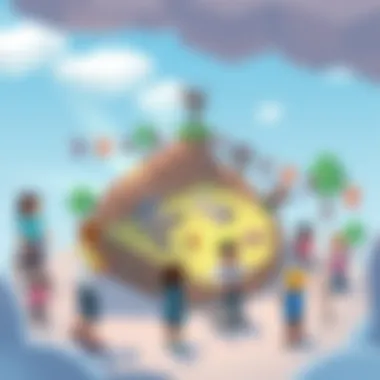
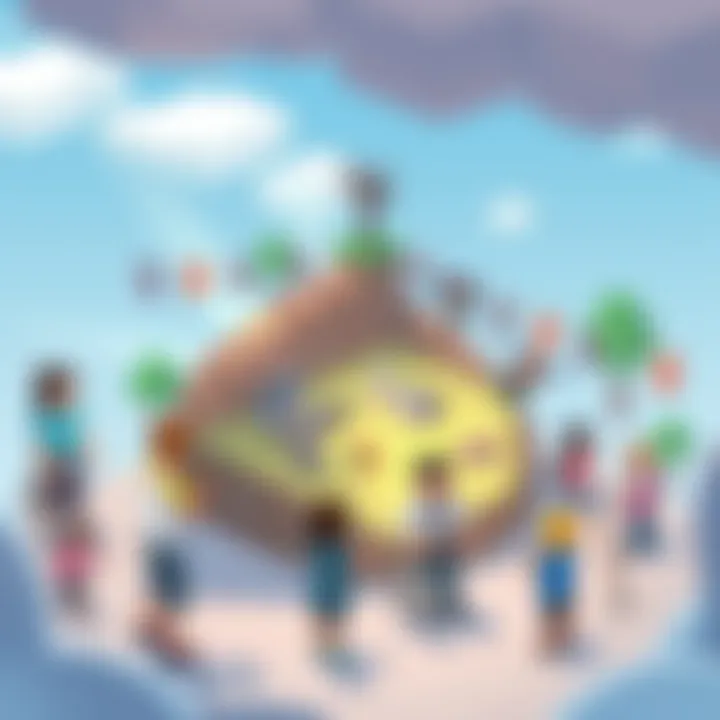
Realms and private servers present an interesting intersection of both local and online multiplayer experiences. Realms, a service offered by Mojang, allow users to create their own private worlds that friends can join without the need for a constant connection from the host’s computer. It’s a secure way to cultivate a tailored community space.
Private servers, on the other hand, are often community-led initiatives where players can create customized worlds and experiences according to specific themes or rules. The flexibility and control of private servers can lead to a uniquely personalized gameplay experience.
- Benefits:
- Controlled Environments: Players can moderate their communities, keeping out negativity and tailoring the atmosphere.
- Custom Modifications: Realms and private servers often allow for mods and plugins that enhance gameplay, leading to unique twists on the Minecraft experience.
- Player Retention: A familiar community fosters stronger social bonds, encouraging players to log in more regularly.
However, managing a private server can be daunting for new players. There's often an added layer of technical know-how required to set everything up and maintain it.
In summary, whether you are playing in the same room or teaming up with players spread across continents, understanding these multiplayer modes enriches the overall gaming experience, allowing Minecraft enthusiasts to find their niche and enjoy countless hours of gameplay.
Server Dynamics
Server dynamics form a crucial backbone of the Minecraft multiplayer experience, affecting everything from gameplay mechanics to community engagement. Without a well-functioning server, players might find their experiences marred by lag, disconnections, or an absence of the rich interactions that characterize the game.
Creating a Server
When it comes to making a server, the first step often starts with understanding your audience. Do you want a server for friends or a larger community? Choosing the right software is key. For those who prefer more customizable options, server management tools like Spigot or Paper can provide enhanced performance and versatility over the vanilla Minecraft server.
Beyond software selection, hardware specifications are also vital. A robust server needs sufficient RAM and an appropriate CPU to handle multiple users without slowing down. Many seasoned players suggest at least 2GB of RAM for smaller servers and recommend upgrading based on the number of concurrent users. Talk about setting the stage for unlimited creativity!
To kick things off, here is a simple command that can get you started:
shell
java -Xmx1024M -Xms1024M -jar server.jar nogui



